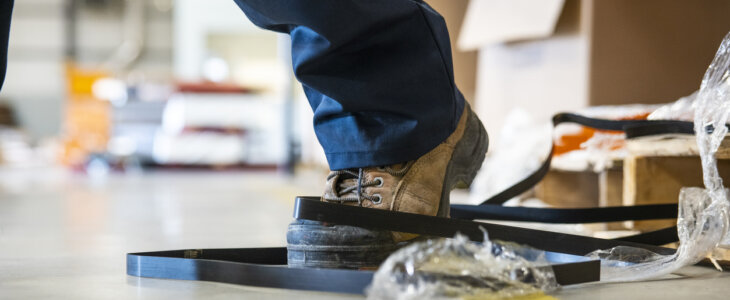It is well known that there are many safety hazards on construction sites. A common cause of injuries on construction sites in New York is trip and fall accidents. Trip and fall accidents occur when an employee trips due to an unsafe walking surface. Trip and fall accidents often result in serious injuries to employees. In this article, we discuss how employers can prevent trip and fall accidents on construction sites in New York.
Follow OSHA Guidelines
The Occupational Safety and Health Administration, also known as OSHA, establishes and enforces guidelines to ensure the safety of worksites. OSHA guidelines mandate that employers provide employees with protection from construction site hazards, provide employees with fall protection systems, and train employees to avoid injuries while on the job.
Obey New York Laws and Regulations
Employees are also required to comply with New York’s laws and regulations that apply to construction sites. These laws address several areas, including scaffolding, cleaning, and inspections. Employers who fail to comply with New York’s construction laws and regulations may face liability for resulting injuries.
Provide Proper Equipment
OSHA regulations require construction employers working at heights of greater than six feet to provide specific types of safety equipment to employees, including guardrails, personal fall arrest systems, and safety nets. In addition, New York’s labor laws require employers to provide workers who are exposed to any elevation hazard—even if under six feet—with adequate fall protection equipment.
Conduct Routine Inspections
The managers of construction sites are also required to regularly inspect the worksite to identify and fix hazards that can cause slip and fall accidents. Common areas to be inspected include:
- Staircases
- Flooring surfaces
- Scaffolding
- Walkways
- Holes
- Roofing surfaces
Create Safety Protocols
Employers should also create safety protocols based on each construction site’s unique hazards. Although not all hazards can be eliminated on construction sites, employers can create protocols to address those hazards, thereby reducing the risk of serious injuries.
Provide Training
Once employers have established worksite safety protocols, they should train their employees on them. This will help ensure that employees are aware of each worksite’s unique hazards. The information included in this training should be regularly reviewed and updated as needed. Examples of possible training opportunities include:
- Preventing slip and fall accidents
- Identifying slip and fall hazards
- How to properly use safety equipment to prevent slip and falls
- General safe workplace practices
- OSHA and New York laws and regulations
Long Island Construction & Labor Accident Attorney
If you’ve been hurt in a trip and fall accident on the worksite in New York, you should contact an experienced Long Island construction and labor accident attorney as soon as possible. At Dell & Dean, PLLC, our experienced New York construction and labor accident attorneys understand the difficulties accompanying a serious slip and fall accident. Therefore, when you come to us for assistance, we will work diligently to obtain compensation on your behalf. Please contact us to schedule a consultation with a New York construction and labor accident attorney.

